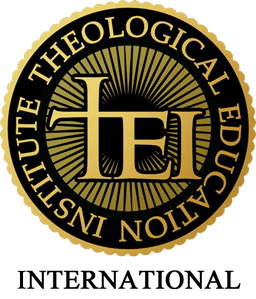The Biblical Basis for Science and the Scientific Method
John C. Rankin
(April 6, 2014)
One of the positive assumptions in the biblical order of creation is that of science and the scientific method. This is a great distinction between the Bible and pagan religions. In the Bible, we worship the Creator and distinguish him from his creation. In pagan religions, the gods and the material world are worshiped in various fashions, merge easily, and the sun and moon are seen as fatalistic deities.
Elsewhere I have noted Kurt Gӧdel’s observation that 1 + 1 = 2 cannot be proven from within the closed system of mathematics. It must first be assumed from outside the system, and then all mathematics and cognate sciences work beautifully. Taking this undisputed assumption, we then moved to the prior and all defining assumption, “In the beginning God created.”
Elsewhere I have also noted that that sound and light are the most basic realities in the universe, scientifically speaking, and as Genesis 1:3 states at a prior assumptive level: “And God said, ‘Let there be light.’ ” Sound and light – this readily lends support to the theory of the Hot Big Bang, and the biblical text identifies he who pulled the trigger, he who lit the fuse, by his voice, by his spoken word. And we also come to learn why.
Elsewhere too, I have noted that cause and effect drives us from present observed reality back through the physics of an expanding universe to the necessity, beauty and goodness of the One who is greater than space, time and number.
“Observed reality” is what the discipline of “science” is all about. The Latin term scientia means observable knowledge. t is a discovery process that observes what is there, and is not an all-encompassing philosophy.
In every dimension, the Bible profiles knowledge and reality, things as they are, and all is rooted in the deeper reality of God’s nature and human nature in his image. As well, the ten major assumptions from only Genesis, as written about elsewhere, equal the basis for “the liberal arts and sciences.” All the disciplines are intertwined, where for example, as we also noted in the Prologue, music is completely mathematical in its structure and ability for giving aesthetic pleasures as manipulated sound waves massage somatic reality.
The order, beauty and reality of only Genesis, here in the observable sciences, is the preceding opposite of the cacophony, marred image and unreality in the storylines of pagan religions, beginning with Babel on forward.
It also proves necessary to know and do good science when addressing controversial subjects such as the archeology of Jerusalem and the ancient near east, the theory of macroevolution versus the days of creation, the biology of conception, genetic questions concerning homosexuality, and in addressing the interface between our physical lives and the world of angels and demons. All is to be tested in view of observable reality.
Now, beyond these assumptions already in place, Genesis 1 brings three other assumptions to bear. And then there is an observation to make in the Law of Moses and another with the words of Jesus.
Celestial Objects
The first observation in Genesis 1 concerns the days of creation (click here, and also click here) and their remarkable theological and literary structure that unleashes good scientific inquiry.
The second observation brings us to these words from the fourth day:
“And God said, ‘Let there be lights in the expanse of the sky to separate the day from the night, and let them serve as signs to mark seasons and days and years, and let them be lights in the expanse of the sky to give light on the earth.’ And it was so. God made two great lights – the greater light to govern the day and the lesser light to govern the night. He also made the stars. God set them in the expanse of the sky to give light on the earth, to govern the day and the night, and to separate light from darkness. And God saw that it was good. And there was evening, and there was morning – the fourth day. ”
Rooted in the assumption of sound and light in Genesis 1:3, we see an example in Genesis 1:14-19. There, God makes the sun, moon and stars “to serve as signs to mark seasons and days and years … to give light on the earth.”
Moses knows the Israelites are coming out of 400 years in a pagan nation. Thus, and as led by the Spirit, he knows well their need to be completely separate from the pagan deities they and their forefathers had encountered back to Abraham’s father and prior. Had he used common terms for the sun and moon, the Israelites could have easily conflated them with Egyptian, Canaanite or Babylonian deities. Pagan religion viewed all the astronomical bodies through the lens of sorcery and astrology, and not in scientific terms as inanimate objects.
These paganisms assume that the sun, moon and stars are gods and goddesses, with the astrological calendars and fatalisms that follow in their wake. In Egypt, the sun and moon were capricious deities (e.g., the sun god Ra (or Re) is similar to the Hebrew for evil, ra). And given how the languages of all proximate nations are cognates of proto-Semitic languages, Moses is separating the sun and moon from confusion with such pagan deities.
Moses is most deliberate in his choice of language at this point. He does not use the words we would translate as “sun” and “moon,” for in other related Semitic and non-Semitic languages, the same words also refer to pagan deities.
We know this well today, as in English the transliterated names for the planets are Latin names of the Roman pantheon – Mercury as the messenger of the gods, Venus as the goddess of love, Mars as the god of war, Jupiter as the chief god, Saturn as the god of agriculture, Neptune as the god of the sea, and Pluto as the god of the underworld. The other planet, Uranus, is from the Greek pantheon – the personification of heaven and the ruler of the world, the husband of Gaea (earth), and the father of Cronus (sequential time) who later castrates and dethrones him at the instigation of Gaea.
Thus, when Moses identifies the sun and the moon as “the greater light” and “the lesser light,” he is making a simple physical observation, along with the stars, describing them for what they are – being scientific before modern “science” had such an identity. Moses defines the sun, moon and stars as inanimate material objects, not as animated deities as in pagan religion. Reality. Science is the ability to look at things as they are. Biblical revelation shows things for what they are.
In fact, honest science traces to the biblical worldview, all because creation is a gift of God, and not something to be worshiped.
The Principle of Falsification
The third observaiton concerns the biblical assumption of the ethics and substance of the principle of falsification, aka “the scientific method” in the Law of Moses.
We see the principle of falsification in Deuteronomy 18:9-22 as Moses defines opposition to the demonic non-science of sorcery and witchcraft (intertwined ethically with child sacrifice). Namely, if a “prophet” speaks a word in the name of Yahweh, and it fails to come to pass, he is falsified, and liable to the death penalty.
Thus, the standard for a true prophet in the Law of Moses is 100 percent accuracy, a 1.000 batting average. This is the most severe scrutiny possible, paving the way uniquely for the same ethical standard for honest science. Has any other religion or nation ever subjected is prophets or counselors or wise men or sorcerers to such a high standard?
In scientific research and discovery, if a theory is proposed to explain something, standards for testing that theory are set in place where all the variables are controlled as tightly as possible. If a theory has to do with the amount of electromagnetic energy in a certain substance, then a test is devised to measure that energy. For the theory to be “proven” true, it must produce the same results under the same conditions every time; if it dopes not, it is “falsified” and must be reworked until no further inconsistencies occur. If one measurement is evidenced 1,000 times in a row, then that measurement can be said to have a scientific basis, of a theory established.
But also, even the most established “proven” theories are always open to being disproven. If the measurement is consistent 10,000 times, then different a subsequent time, the theory is disproved. It is falsified if all the variables are certifiably the same. A new theory is proposed to take into consideration this variation, and a process pursued until no variations occur again.
At the ethical level, I have confidence equal to any measurement of scientific fact that the doctrines of creation, sin and redemption, and their assumptions, interpret all Scripture and life accurately. I have confidence likewise concerning the God, life, choice, sex paradigm, the ten positive assumptions of only Genesis, the six pillars of biblical power, etc. In fact, the power to love hard questions undergirds all honest science and all academic studies.
Do I expect evidence ever to be presented that would alter these relentlessly tested convictions? Do I ever expect that 1 + 1 = 2 will be disproved mathematically? No on both counts. But too, the more secure I am in both questions, the freer I am to entertain skeptical perspectives that might seek to dislodge these convictions.
Theocratic Israel is a community of choice, and those who wish to disobey Yahweh’s laws, or to believe in other gods, are free to go to other nations where such is acceptable. But to remain in theocratic Israel and to prophesy falsely is an act of treason, aimed at upending the goodness of Yahweh’s laws, the well-being and survival of the nation, and the lineage of the Messiah.
A casualty of science without the anchor of biblical ethics can be seen in academia, where research grants from the business community or government are pursued deceptively. Very many lies and falsified research have been produced in order to keep the spigot of research grants coming into universities that are dependent on the income necessary to keep a certain department and its faculty employed. We see an avalanche of junk science used in various political agendas.
Thus, Jesus and the “If” Clause
In the Deuteronomy 18 text, Yahweh says he will raise up a prophet, like Moses, one who will speak the truth to them. This Prophet is the measure of the truth and ethics necessary for the principle of falsification. This is a Messianic prophecy that refers to Jesus as the ultimate Prophet, as Peter explicitly teaches in Acts 3:19-23. Jesus is the standard. In John’s gospel, we see Jesus submitting himself to the principle of falsification as he challenges his religious elitist enemies:
“Jesus said to them, ‘If God were your father, you would love me, for I came from God and now am here. I have not come on my own; but he sent me. Why is my language not clear to you? Because you are unable to hear what I say. You belong to your father, the devil, and you want to carry out your father’s desire. He was a murderer from the beginning, not holding to the truth, for there is no truth in him. When he lies, he speaks his native language, for he is a liar and the father of lies. Yet because I tell you the truth, you do not believe me! Can any of you prove me guilty of sin? If I am telling you the truth, why don’t you believe me? He who belongs to God hears what God says. The reason you do not hear is that you do not belong to God’ ” (John 8:42-47).
Here we see the “if” clause (which Moses uses often as well), the subjunctive power of inviting his enemies to prove him wrong. Later in the gospel, as Jesus continues to interact with these religious elitists, he says that he and the Father are one, and they respond by picking up stones to kill him for blasphemy. In Jesus’ response, he says, “Why then do you accuse me of blasphemy because I said ‘I am God’s Son’? Do not believe me unless I do what my Father does” (10:36-37).
In John 8, the “if” clause is marked by a parallel “unless” clause in John 10. Jesus is submitting to the principle of falsification, something his opponents would not dare to do.
###


